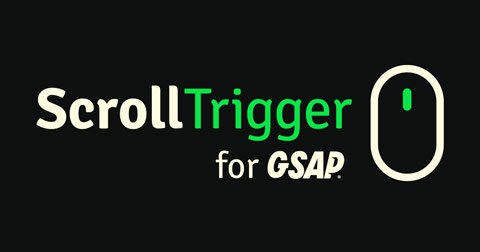Performance
- gsap:
GSAP is renowned for its exceptional performance, capable of handling complex animations with minimal lag. It optimizes animations to run smoothly across all devices and browsers, making it a preferred choice for high-end animations.
- jquery-ui:
jQuery UI animations are generally less performant compared to dedicated animation libraries. While it provides basic animations, it may not handle complex animations efficiently, especially on lower-end devices.
- velocity-animate:
Velocity.js offers performance improvements over jQuery's native animations by using requestAnimationFrame and batching DOM updates. It is designed to be faster and more efficient, making it suitable for both simple and complex animations.
- animejs:
Anime.js is lightweight and optimized for performance, allowing for smooth animations without significant overhead. It uses requestAnimationFrame for rendering, which helps in achieving high frame rates and reducing CPU usage.
Ease of Use
- gsap:
GSAP has a slightly steeper learning curve due to its extensive features, but it provides comprehensive documentation and examples, making it easier to master for developers looking to create advanced animations.
- jquery-ui:
jQuery UI is easy to use for those already familiar with jQuery. It offers a simple way to add animations to existing jQuery projects without needing to learn a new library.
- velocity-animate:
Velocity.js maintains a jQuery-like syntax, making it easy for jQuery users to adopt. It provides a familiar API while offering enhanced performance and features.
- animejs:
Anime.js has a straightforward API that is easy to learn, making it accessible for beginners. Its declarative syntax allows for quick implementation of animations with minimal setup.
Animation Complexity
- gsap:
GSAP excels in handling complex animations with advanced features like timelines, staggering, and callbacks, making it suitable for intricate animation sequences and professional-grade projects.
- jquery-ui:
jQuery UI is limited in terms of animation complexity. It provides basic effects and transitions but lacks the advanced capabilities needed for more sophisticated animations.
- velocity-animate:
Velocity.js supports complex animations and can handle multiple properties and easing functions, making it a good choice for projects that require a balance of simplicity and complexity.
- animejs:
Anime.js supports complex animations involving multiple properties, easing functions, and timelines, allowing for intricate sequences and choreographed animations.
Community and Support
- gsap:
GSAP has a large and active community, with extensive documentation, tutorials, and support forums. It is widely used in the industry, ensuring a wealth of resources for developers.
- jquery-ui:
jQuery UI benefits from the large jQuery community, with ample resources and documentation available. However, it is less frequently updated compared to newer libraries.
- velocity-animate:
Velocity.js has a smaller community compared to GSAP but still offers decent documentation and support. It is less commonly used in new projects, which may affect the availability of resources.
- animejs:
Anime.js has a growing community and good documentation, providing support through forums and GitHub. However, it may not have as extensive a user base as some other libraries.
Integration
- gsap:
GSAP is highly compatible with other libraries and frameworks, including React, Vue, and Angular. It can be seamlessly integrated into existing projects, enhancing animation capabilities without conflicts.
- jquery-ui:
jQuery UI is designed to work with jQuery, making it easy to integrate into existing jQuery projects. However, it may not be the best choice for modern frameworks that do not rely on jQuery.
- velocity-animate:
Velocity.js can be integrated with jQuery and works well with other libraries, but it may not be as flexible as GSAP for modern frameworks. It is best suited for projects already using jQuery.
- animejs:
Anime.js can be easily integrated with other libraries and frameworks, making it versatile for various projects. It works well with React, Vue, and other modern frameworks.


